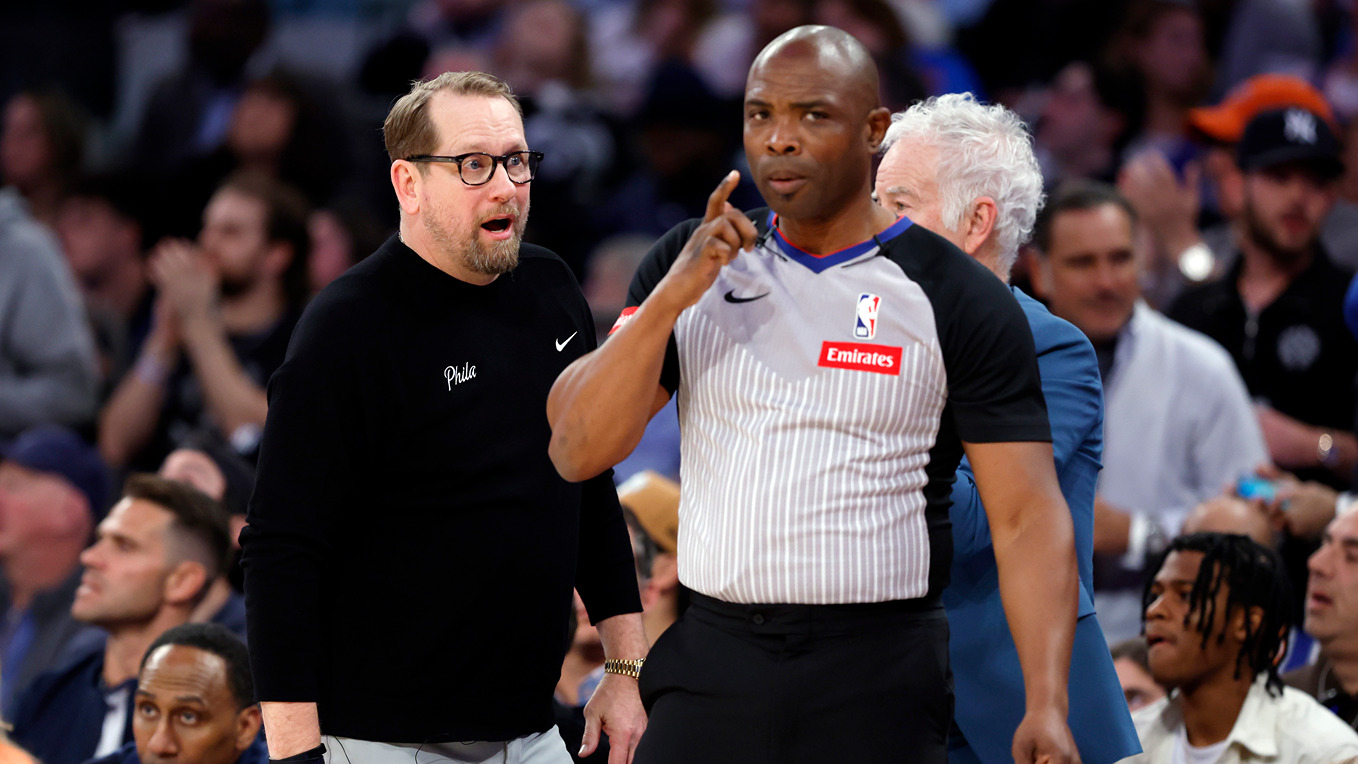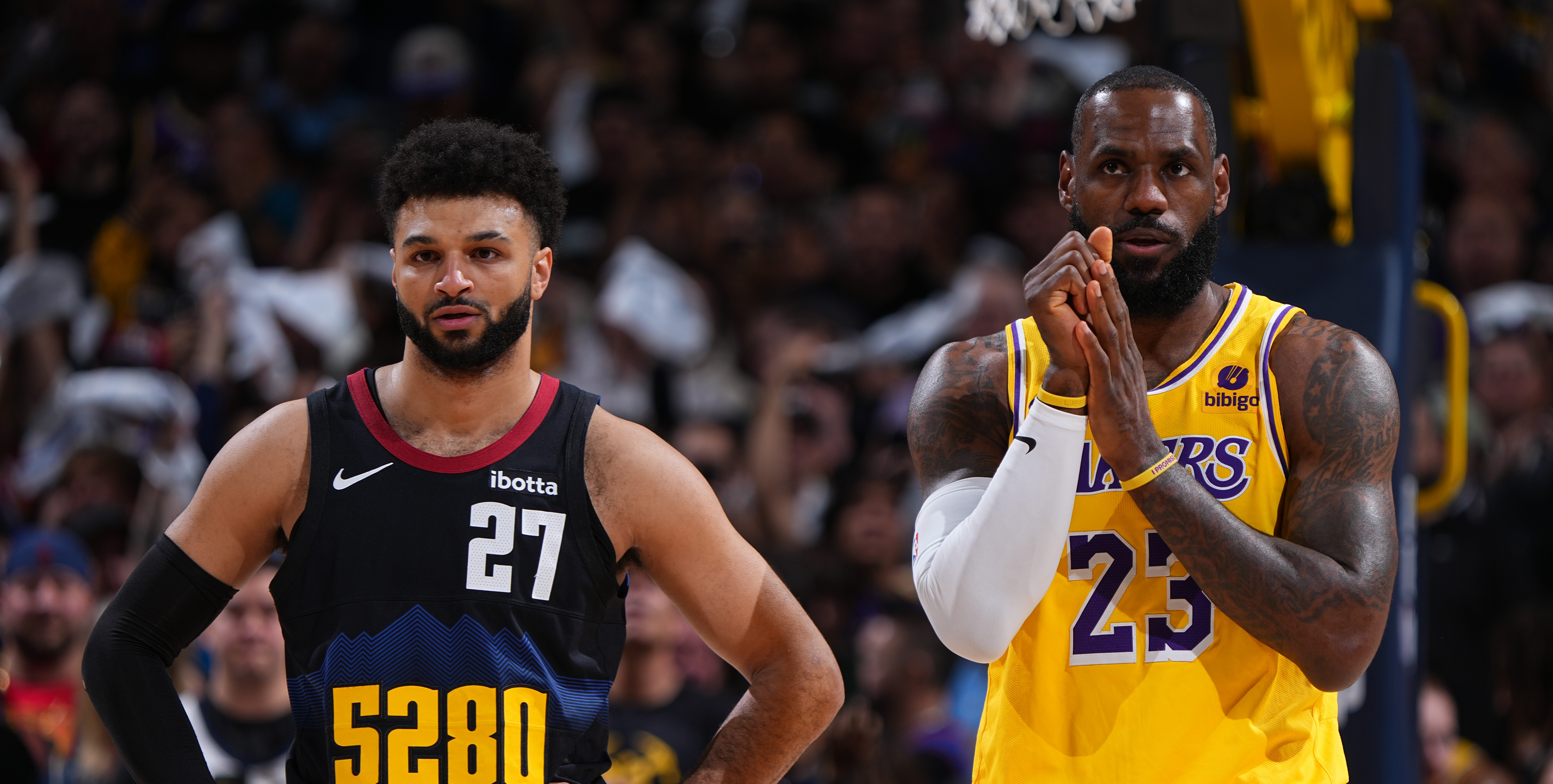Back in July, when there was plenty of buzz about Ben Simmons no longer being the Sixers’ starting point guard, he made a memorable comment about positions.
“I’m a basketball player at the end of the day,” he said. “You know me, you put me on the floor, I’ll make anything happen, whether it’s plays, buckets, stops. I’ll guard anybody 1 through 5, I’ll run the floor, I can get to the rim, I can score the ball and I make plays happen.
"So wherever you put me — 1, 2, 3, 4, 5 — it’s going to happen. I don’t really look at it as a title or position. That’s mainly for you guys to put down in your articles.”
Stay in the game with the latest updates on your beloved Philadelphia sports teams! Sign up here for our All Access Daily newsletter.
Simmons’ point is reasonable and his confidence justified, but the shift in his role was still notable. We only got to see him play in three games at Disney World before he suffered a season-ending left knee injury, meaning the sample size with Shake Milton at point guard and Simmons as a power forward — or a point forward, or non-starting point guard, or whatever you’d like to call it — is small.
The question of Simmons’ offensive role is an important one facing Doc Rivers, so we’ll hit on a few salient points for the Sixers' new head coach to consider here:
Living at the elbows
The Sixers were using Simmons in ways not typically associated with a “point guard” well before the post-hiatus position change. Brett Brown called more actions with Simmons as a screener and roller beginning in January. And, when Joel Embiid was sidelined by a torn ligament in his left ring finger, the Sixers started Milton and often ran offense through Simmons at the elbow. The NBA’s tracking data reflect that this adjustment helped Simmons.
- Simmons from season opener to Dec. 31 (34 games): 2.4 elbow touches per game — 0.350 points per elbow touch
- Simmons from Jan. 3 to end of season (23 games) 3.8 elbow touches per game — 0.540 points per elbow touch
He also got about two more paint touches per game starting in 2020 and produced at a higher efficiency on those touches.
Unless Simmons makes dramatic improvements with his shot, defenses should continue to give him ample space. As we’ve analyzed before, there are ways to capitalize on this approach with Simmons at point guard. When the Sixers had shooters like JJ Redick and Marco Belinelli, they could run “Floppy” actions and the lack of ball pressure enabled Simmons to pick out the open guy with little resistance. Redick could also sometimes find jumpers off dribble handoffs with Simmons, essentially filling the space that was originally there because of his point guard’s reluctance to shoot.
Though it wasn’t quite as dangerous or varied as when Redick was in Philadelphia, “12” still occasionally did the same thing this season — create an open jumper for a player who likes taking open jumpers. Furkan Korkmaz profited on the play below.
The roster around Simmons clearly should play an integral part in determining scheme. That said, one way to meld the idea of Simmons as an elbow facilitator and as a half-court ball handler could be rather simple. If defenses sag well off him, the Sixers could try having Simmons dribble straight to the elbow and start the action from there — a ball screen or pass might not always be necessary to get him in that spot.
Who’s the starting point guard?
NBA
If the roster were to theoretically be identical, Milton would still be a good answer to the question above. He was one of the brightest stories for the Sixers this past season, both in terms of his path from the G League to playoff starter and his on-court value. Counting the playoffs, he shot 60 of 132 (45.5 percent) from three-point range after his first NBA start.
Milton, though, is still relatively new to the NBA. The Sixers would have to feel better about a larger share of Simmons’ minutes being off the ball with a high-level veteran at point guard (like Chris Paul, whom Rivers of course coached with the Clippers) than with a 24-year-old like Milton.
The pace factor
The Sixers were within the NBA’s top 10 in pace during Simmons’ first two healthy seasons, then dropped to 20th in 2019-20. You know if you’ve ever watched Simmons that he likes to play fast and is a special talent in the open court.
Personnel can limit possibilities in this area, but pace is certainly something that can be coached. Paul Westhead’s ultra-rapid Loyola Marymount teams, as an extreme example, could have played at an average pace if that’s how they were instructed.
It might not be as basic as telling Simmons to sprint ahead whenever he has a chance, especially because he needs to have teammates in the picture to distribute to three-point shooters, which is one of his main strengths. However, perhaps Rivers can make better use of his exceptional speed.


